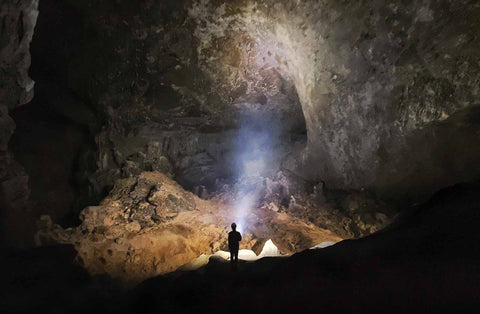Spotlight vs. floodlight
What exactly is a spotlight, and what distinguishes it from a floodlight? Understanding the unique traits of both lights helps you choose the most suitable light for the task at hand.
The key to discerning between spotlights and floodlights lies in understanding the concept of candelas.
Candelas: What Are They?
Candela (CD) denotes the quantity of light a lighting device emits in a specific direction. This term is synonymous with "candlepower." The measurement of candlepower originates from when candles were the primary source of illumination.
One spotlight and floodlight candela is approximately equivalent to the light produced by a candle with specific dimensions. "Maximum Beam Candlepower" (MBCP) describes the maximum intensity of the focused light beam. It is emitted from the center of the lighting device and projected in a single direction.
In industrial settings, lumens and candelas measure the luminous efficacy of lighting devices. One candela is approximately equal to 12.57 lumens.
Lumens don’t account for the spread or divergence of emitted light from the device. In contrast, the candela value of a lighting device focuses primarily on a concentrated beam of light.
What Are Floodlights?
Before discussing the differences between spotlights and floodlights, it’s best to discuss them individually.
A floodlight is a light source characterized by its wide beam spread. Typically, it emits light with a broad beam greater than 60 degrees.
Key Features in Floodlights:
- Floodlights produce non-directional illumination
- Due to their broad beam angle, floodlights can illuminate larger areas effectively
- Floodlights are ideal for close-up tasks and indoor or outdoor situations
What Are Spotlights?
A spotlight has a narrow beam spread, typically less than 45 degrees. Most spotlights have a beam angle no wider than 25 degrees, making them more concentrated than floodlights.
This focused beam allows precise control over the direction of illumination, making spotlights ideal for highlighting specific areas or objects.
Key Features in Spotlights:
- Spotlights have a focused and narrow beam
- They have a high beam distance, illuminating distant objects more clearly
- Spotlights are ideal for search and rescue, hiking, boating etc.
Differentiating a Floodlight and a Spotlight
Generally, a spotlight produces a focused beam, creating more of a "spot" of light rather than a broad "wash." Conversely, floodlight describes a light with a widespread beam, typically used to wash a wall with light.
As you tackle the difference between floodlights and spotlights, you’ll know that the former illuminates the entire scene within lighting range.
Conversely, spotlights produce a concentrated effect, allowing for precise illumination direction. High-quality spotlights can focus on specific objects.
Choosing Between Spotlight vs. Floodlight
The decision between using a floodlight or spotlight depends on your specific lighting goals.
Key Features for a Spotlight
- Beam Angle: Narrow (usually < 45 degrees)
- Light Focus: Concentrated, focused beam
- Beam Shape: Circular, tight beam
Key Features for a Floodlight:
- Beam Angle: Wide (usually > 60 degrees)
- Light Focus: Broad, widespread beam
- Beam Shape: Expansive, Illuminates large areas
Understanding spotlight vs. floodlight can help you identify what type of light is best for your lighting application. Let the pros at Fenix Lighting help you decide or browse through our website for more information on what we can offer.




